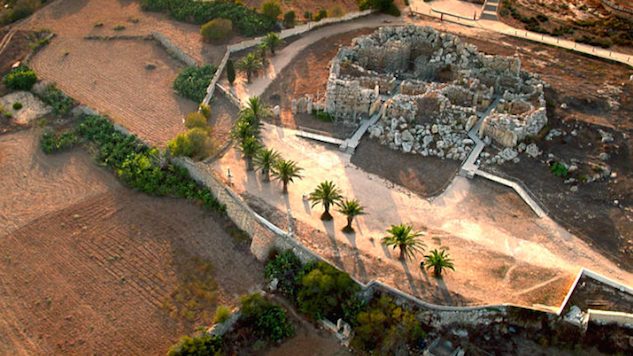Smithsonian Channel’s Sacred Sites Explores Humankind’s Most Transcendent Locales
Photo: Smithsonian Channel
People have a truly miserable and potentially dangerous tendency to be oblivious to their own history. This is why—well, one reason why—shows like Sacred Sites can be so crucially important to “the cultural conversation.” Docuseries that illuminate history, trace traditions, get at the root of why something is happening now: These kinds of programs have immense potential power to deepen our cultural literacy, improve understanding, and even make a dent in pandemic bigotry, xenophobia and general ignorance of the procession of human society on this strange little planet.
Sadly, there often seem to be trust issues in play.
Have you ever watched those “Yes, but could this really be proof that Jesus of Nazareth was a real, actual, historical person?”- or “Is it possible we are on the brink of learning why the Maya disappeared from Chichen Itza?”-type programs with which the History Channel is so liberally peppered? You know the style: re-enactment spliced with commentary from anthropologists, archaeologists and scholars, punctuated with suggestive voiceover that gets you all ready in Act I for the Big Revealed Truth but in the end can’t really deliver it. That’s when it occurs to you that if they had actually made a positive ID on “the Behemoth” referenced in the Book of Job you would totally have heard about it on NPR by now.
Folks, of Sacred Sites I regret to note that you’re going to get actors playing Guinevere and Merlin, Ramses II and Hatshepsut, St. James, and certain German persons who committed certain atrocities in the 1930s and 1940s. And you’re going to have your attention drawn to some super awesome places with serious mythical reverb. Some theories will be posited, but mostly they will remain theories. There will be a frustrating amount of repetition, both of narrative and of actual footage, which reappears like your neighbor’s cat that thinks it’s successfully tricking you into believing it doesn’t have a home and three squares across the street. Oh: I think there is, at one point, a voiceover by Liam Neeson? He does not say “Marco from Tropoja,” but nonetheless I am pretty sure I made a positive ID on that, if not the Behemoth of Old Testament fame. (If the Behemoth were a dinosaur, wouldn’t that be awkward? Am I digressing? See, this is my point. I’m not exactly riveted here, and I should be.)
-

-

-

-

- Curated Home Page Articles By Test Admin October 21, 2025 | 3:10pm
-

- Curated Home Page Articles By Test Admin October 21, 2025 | 2:57pm
- Urls By Test Admin October 21, 2025 | 2:57pm
- Curated Home Page Articles By Test Admin October 21, 2025 | 2:55pm
-

-

-

-

-

-

-

-

-

-

-

-

-

-

-

-

-

-

-

-

-

-

-

-

-

-

-

-

-

-

-




































